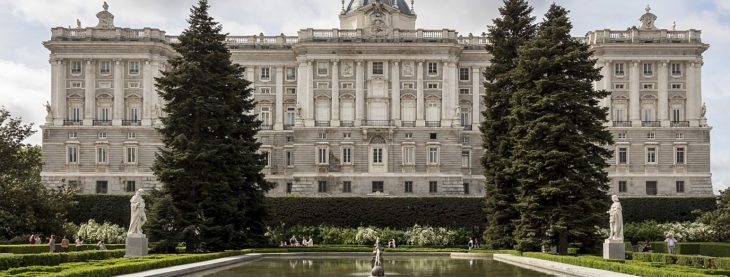What is the Capital of Spain? Madrid

Madrid is the capital of Spain and the province and the autonomous region of the same name. Madrid is located in the middle of the country by Río Manzanares, a bee to the Tajo, on the Castilian highlands, about 650 meters above sea level. The metropolitan area has 6 199,000 residents (2015).
Business
The location is artificial in many ways, as the place has lacked many of the conditions that have been conducive to growth in other major cities. The interior of the Iberian Peninsula is a relatively sparsely populated, resource-poor area. Madrid has admittedly been a hub for old roads, but it was only with the development of the rail network in the latter half of the 19th century that it became the most important trading center for the interior.
Madrid is Spain’s administrative and financial center, and also plays an important role as a transport hub, trade and cultural center. Barajas International Airport is located northeast of the city center. The city has a good deal of industry. The light industry dominates with the manufacture of textiles, clothing and leather goods, the electrical and optical industry, the manufacture of trucks, aircraft, machinery, rubber and plastic products, food and pleasure goods. The city is also an important center for the film industry, printing industry and publishing.
Culture
The university was founded in 1508 in Alcalá de Henares and moved to Madrid in 1836; a separate university town was built in the 1930s. There are a number of other universities and higher education institutions.
Among the museums is the Prado Art Museum, with one of the world’s richest collections of paintings, Museo Reina Sofía, Museo Thyssen-Bornemisza, Museo Romántico and the Armería Real arms collection. In addition, there are archaeological museum, military museum, maritime and wax museum, as well as botanical and zoological gardens.
Resorts
The town is well regulated and beautiful. The traditional center is Puerta del Sol, a wide, crescent-shaped space that forms a meeting point for several streets. Calle del Arenal extends west to Plaza de Oriente, a large square with Philip’s equestrian statue and a number of other statues of West Gothic and Spanish kings. Here is the royal palace Palacio Real (1738–1764). To the east, the busy Calle de Alcalá runs through the city’s central business district. At the Plaza de la Cibeles it is crossed by the mighty park street (Paseo).
A characteristic feature of the cityscape is the many modern high-rise buildings; Also mentioned are the Metro (1919, rebuilt in the 1960s) and the bullring Plaza de Toros, which seats 14,000 spectators. The outskirts have large parks; in the west the Jardines de Palacio and the Parque del Oeste, in the east the Parque del Retiro and the Parque de Madrid.
Madrid has many monasteries and over 100 churches, among them the Cathedral of San Isidro el Real from the mid-17th century with many works of art, and San Francisco el Grande from about 1780. From this time also originated Palacio Real and a number of other magnificent buildings. Outside Madrid itself is a growing ring of suburbs and satellite towns.














































